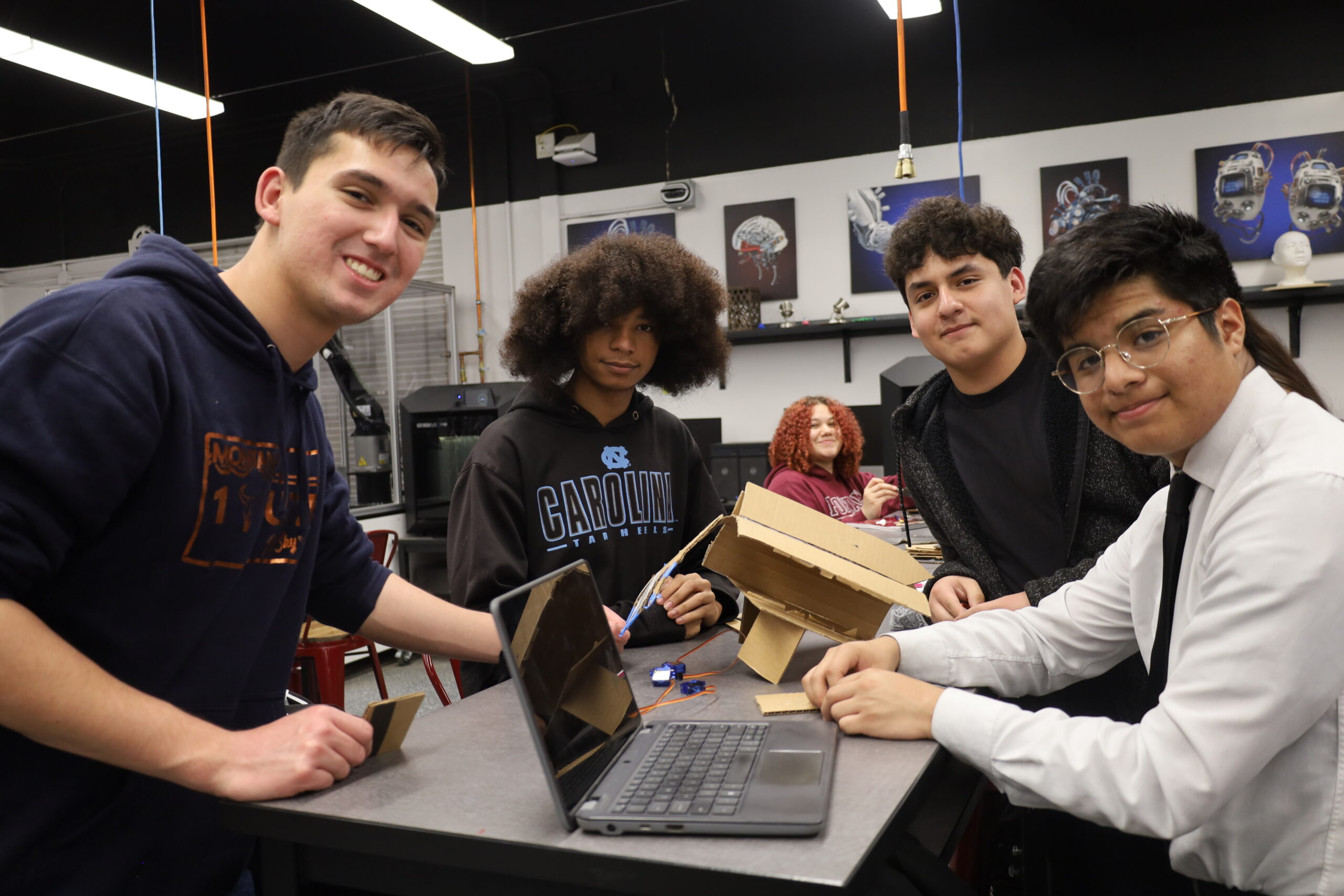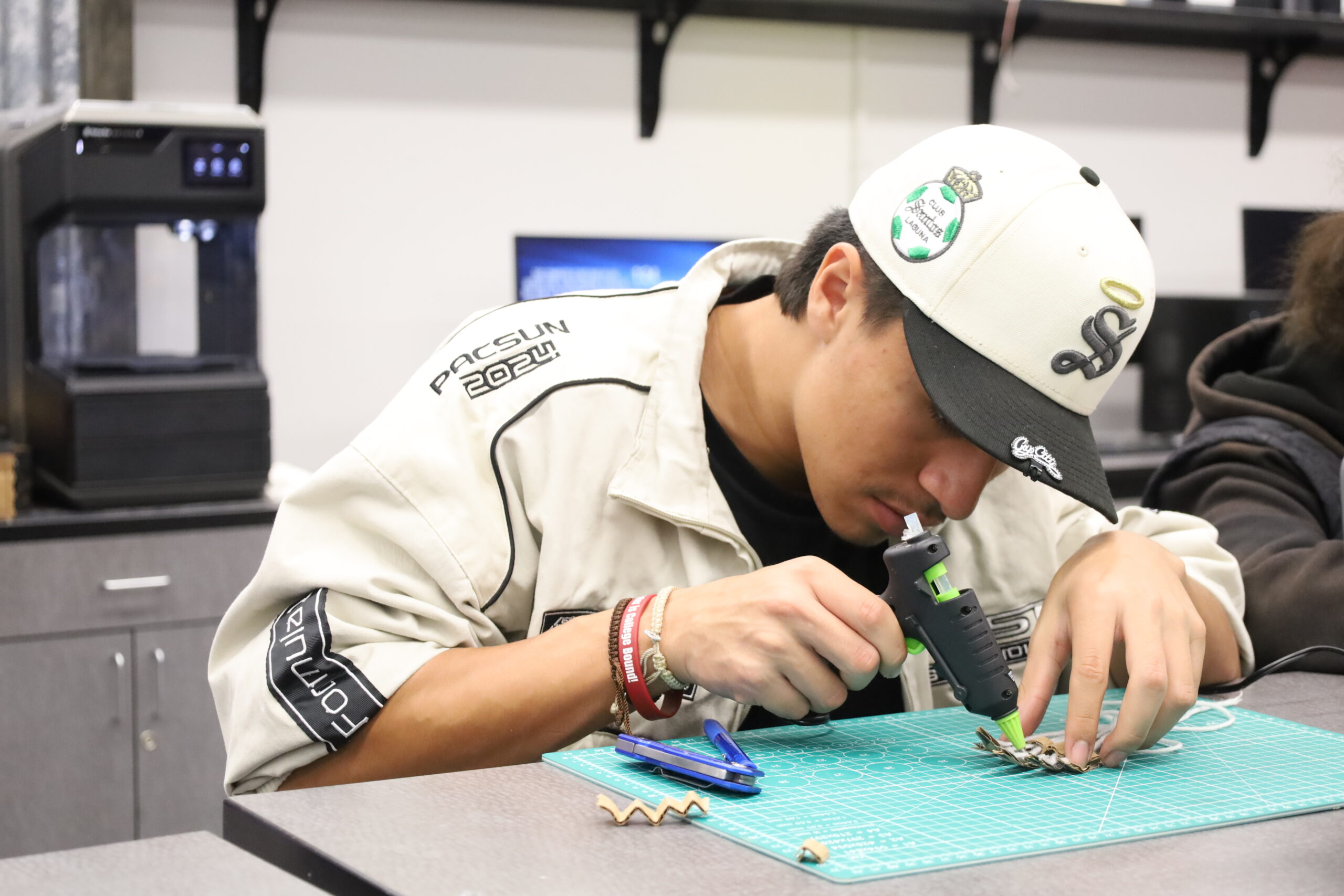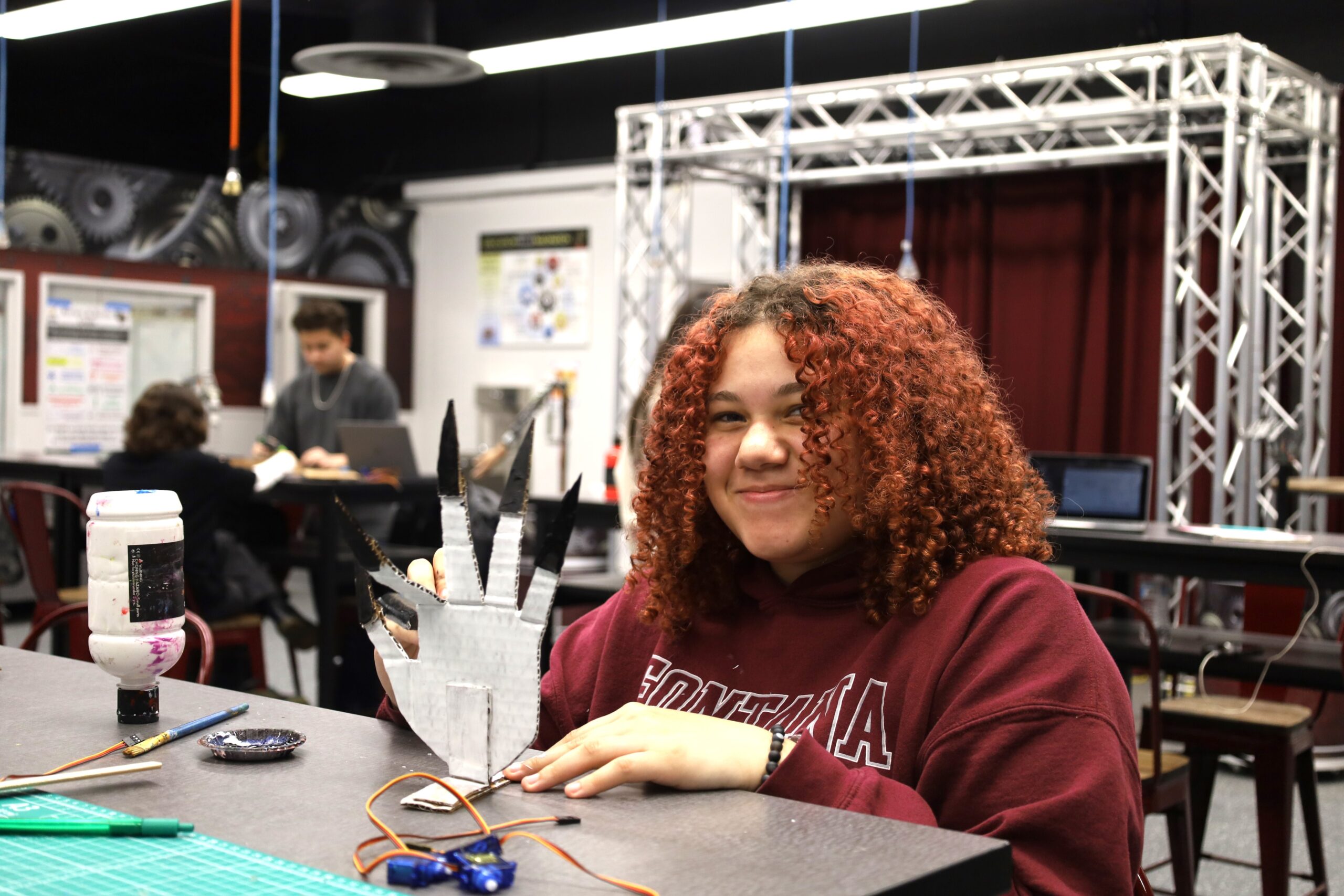Fontana Unified School District
Fontana Unified Students Honored in National Design Competition for Innovative Assistive Technology
FONTANA, CA – Students in Fontana High School’s (FOHI) Bio-Animatronic and Neuroprosthetic career technical education (CTE) pathway earned special recognition in the International Technology and Engineering Educators’ (ITEEA) REACH Challenge for their work designing adaptive and assistive living devices.
The REACH Challenge is a national competition where students create innovative technological solutions to improve people’s lives in their community. This year, four teams of FOHI students earned special recognition for their REACH Challenge projects. The honor comes with a REACH banner and discounted registration for the 2025 ITEEA Conference on April 2-5, 2025 in St. Louis.
FOHI’s Bio-Animatronic and Neuroprosthetic pathway is a two-part program that teaches students advanced skills in science, technology, engineering, and mathematics (STEM). Diann Bravo, who teaches the program, has encouraged her students to participate in the REACH Challenge because of the valuable hands-on experience it provides in biotechnology and prosthetics.
“Students are able to take the skills they’re developing and use them to make a tangible difference in the lives of those in their community,” Bravo said. “We are trying to show our students that they can affect change and help others right now. They do not have to wait for their careers or for tomorrow, they can start today.”
Fontana High’s Blue Ducklings team created a custom glove for a group member’s cousin, who was paralyzed in a quad-bike accident. With a design inspired by his love for the Los Angeles Dodgers, the glove enables him to hold a pen and continue pursuing his passion for writing, overcoming the challenges posed by limited hand and arm movement.
“This project really opened my eyes to the challenges that people face every day,” said Diego Verdin, a Blue Ducklings member. “We often notice these issues in passing, but working on this project allowed us to see firsthand how much they can impact someone’s daily life.”
Team Rogue Protocol developed a hook system for a class family member, who faces difficulty with everyday tasks after abdominal surgery. The device allows her to easily transfer laundry from the washer to the dryer with minimal effort, alleviating the physical strain of repeated bending and lifting.
The Women in STEM team crafted a phone stand attachment for a sewing machine to help a group member’s grandmother, who has arthritis and is recovering from two hip surgeries. The design allows her to see sketch patterns while sewing, making it easier for her to continue volunteering for the school’s theatre program, where she shows students how to create costumes.
Team Spy Squad engineered an adjustable belt to hold a heating pad, offering relief for a FOHI teacher suffering from chronic back pain. The device gives her the freedom to move comfortably and continue teaching without pain.
“The creativity and problem-solving skills these students are developing are truly inspiring,” Fontana Unified Superintendent Miki R. Inbody said. “What’s especially remarkable is their desire to use their talents to benefit not just their families, but also their teachers and others in their community. It’s amazing to see how they are applying their knowledge to make a meaningful impact.”
Team Drippo also entered the competition and designed a personalized wheelchair desk attachment for a class family member that allows her to use a laptop, read, and write with greater ease.
Fontana High alumnus and college tutor Andru Brannum, a business major at California State University, San Bernardino, supported the REACH Challenge teams. Brannum supported Bravo by helping students find creative solutions to complex problems, facilitating classroom discussions, and adding to the innovative learning environment.
“This project has shown me how technology can improve lives in meaningful ways. It feels rewarding to know that the work we’re doing can actually help someone regain a sense of independence,” said Thomas Costa, a Drippo team member. “It’s made me seriously consider a future in biomedical engineering, where I can continue using my skills to create prosthetics and devices that help people overcome challenges.”
PHOTO CAPTIONS:
FUSD_REACH1: Four teams of Fontana High School students in the school’s Bio-Animatronic and Neuroprosthetic career technical education (CTE) pathway earned special recognition in the ITEEA REACH Challenge for their work designing adaptive and assistive living devices.
FUSD_REACH2: Students in Fontana High School’s Bio-Animatronic and Neuroprosthetic career technical education (CTE) pathway teamed up to design adaptive and assistive living devices as part of the ITEEA REACH Challenge.
FUSD_REACH3: Fontana High School students worked in teams to create assistive living devices to improve lives for people in their community members as part of the REACH Challenge. Students designed a custom glove for writing, a hook system, a phone stand attachment to a sewing machine, an adjustable heating pad belt, and a wheelchair desk attachment to help individuals in their community overcome physical challenges.



Fontana Unified Students Honored in National Design Competition for Innovative Assistive Technology
Fontana Unified School District
- Image Title
- FUSD_REACH1
- Image Caption
- FUSD_REACH1: Four teams of Fontana High School students in the school’s Bio-Animatronic and Neuroprosthetic career technical education (CTE) pathway earned special recognition in the ITEEA REACH Challenge for their work designing adaptive and assistive living devices.
Right-click on the image to save
- Image Title
- FUSD_REACH3
- Image Caption
- FUSD_REACH3: Fontana High School students worked in teams to create assistive living devices to improve lives for people in their community members as part of the REACH Challenge. Students designed a custom glove for writing, a hook system, a phone stand attachment to a sewing machine, an adjustable heating pad belt, and a wheelchair desk attachment to help individuals in their community overcome physical challenges.
Right-click on the image to save
- Image Title
- FUSD_REACH2
- Image Caption
- FUSD_REACH2: Students in Fontana High School’s Bio-Animatronic and Neuroprosthetic career technical education (CTE) pathway teamed up to design adaptive and assistive living devices as part of the ITEEA REACH Challenge.
Right-click on the image to save



